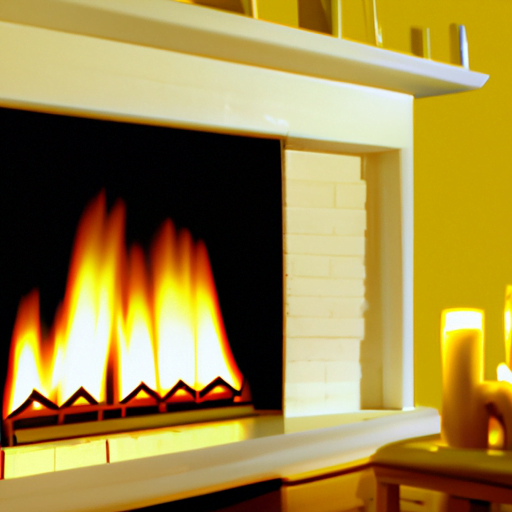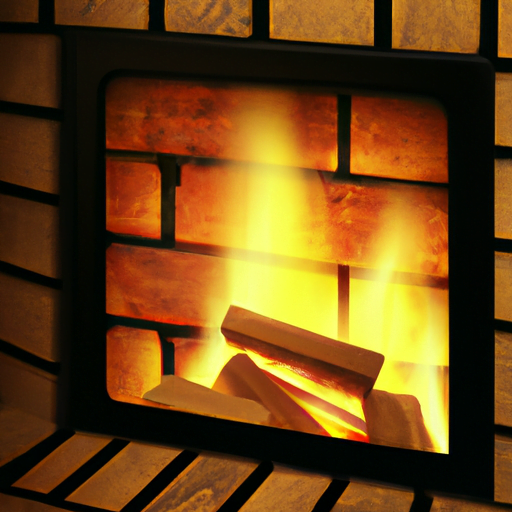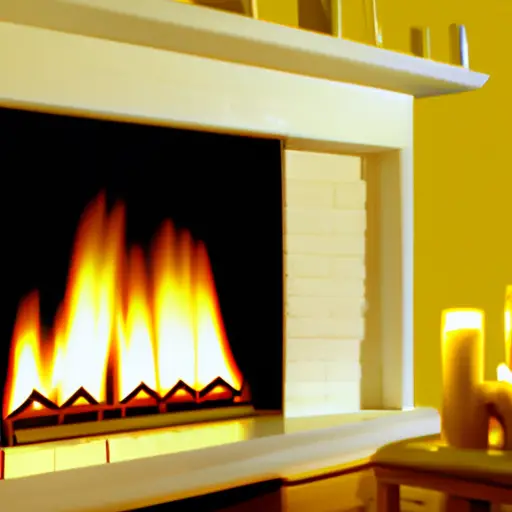So, winter is here and you’re living off the grid. That’s awesome! But let’s be real, staying warm without the help of grid power can be a bit challenging. I mean, there’s no thermostat to crank up or electric blankets to cozy up with. But don’t worry, I’ve got some tips to help you stay warm and toasty during those chilly winter months.
One of the first things you can do is insulate your living space. This can make a huge difference in keeping the cold air out and the warm air in. You can use things like thick curtains, weatherstripping, and even insulation panels on the walls and windows. Trust me, a little extra effort in insulating will go a long way in keeping you warm.
Next, it’s time to get creative with your heat sources. Without grid power, you can’t rely on a traditional furnace or space heater. But there are still plenty of options! Wood stoves are a popular choice for off-grid living as they provide both heat and the cozy ambiance of a crackling fire. You can also consider alternative heating methods such as propane heaters or even DIY solutions like clay pot heaters. In our upcoming article, we’ll dive deeper into these heating options and provide you with all the details you need.
Lastly, don’t forget about staying warm from the inside out. Eating warm, hearty meals and drinking plenty of hot beverages can help raise your body temperature naturally. Plus, who doesn’t love a warm bowl of soup or a hot cup of cocoa on a cold winter day? So, stay tuned for our upcoming article where we’ll share some delicious recipes and tips on how to prepare warm and comforting meals without relying on grid power.
In conclusion, while staying warm in winter without grid power may present some challenges, it’s definitely doable. From insulating your living space to getting creative with heat sources, there are plenty of ways to keep warm and cozy. And of course, don’t forget to indulge in warm meals and beverages to keep your body temperature up. Don’t worry, we’ve got you covered in our upcoming article with more tips and tricks for staying warm off the grid.

Tips for Staying Warm in Winter Without Grid Power
Off-grid living offers the freedom to live sustainably and independently from traditional power sources. However, staying warm in winter can present a challenge without the convenience of grid power. Whether you are living off-grid, experiencing a power outage, or simply looking to reduce your dependence on traditional energy sources, here are some tips to help you stay warm during the colder months.
Using a Wood-burning Stove
A wood-burning stove is a classic and efficient way to generate heat without grid power. By burning firewood, you can heat your home and even cook on top of the stove. It’s important to properly maintain and clean the stove to ensure its optimal performance. Additionally, always practice proper safety measures when operating a wood-burning stove to prevent accidents and minimize the risk of fire.
Using a Pellet Stove
If you prefer a more automated heating option, a pellet stove might be a good choice for you. These stoves use compressed biomass pellets as fuel, which are easy to store and provide a consistent source of heat. Pellet stoves are efficient and can be programmable, allowing you to set a timer and control the temperature in your home.
Installing a Gas Heater
Another option for generating heat off the grid is to install a gas heater. Propane gas heaters are a popular choice, especially in remote areas where access to natural gas is limited. Propane heaters provide instant heat and are relatively easy to install and maintain. However, it’s essential to ensure proper ventilation and regularly check for any gas leaks.
Using Propane or Oil Heaters
If you don’t want to install a gas heater, portable propane or oil heaters are an alternative option. These heaters are convenient and provide instant heat without the need for electricity. When using portable heaters, it’s important to follow safety guidelines, such as keeping them away from flammable materials and never leaving them unattended.

Insulating Your Home Properly
Proper insulation is critical for maintaining warmth in your off-grid home. Insulation helps to reduce heat loss and keeps cold air from seeping in. Here are some ways to insulate your home effectively:
Sealing Windows and Doors
Check for any gaps or cracks around windows and doors and seal them with weatherstripping or caulking. This will prevent drafts and keep warm air from escaping.
Using Weatherstrips
Weatherstrips are an inexpensive and effective way to seal gaps around windows and doors. Apply weatherstrips to create a tight seal and minimize heat loss.
Adding Insulation to Walls and Attics
If your off-grid home lacks sufficient insulation, consider adding additional insulation to the walls and attics. This will help to prevent heat loss and keep your home warm during the winter months.
Using Alternative Sources of Energy
In addition to heating options, alternative sources of energy can contribute to keeping your off-grid home warm in winter. Here are some options to consider:
Installing Solar Panels
Solar panels are an excellent choice for off-grid living. They convert sunlight into electricity, which can be used to power various devices, including heaters. By harnessing the power of the sun, you can generate sustainable energy and reduce your reliance on the grid.
Using Wind Power
If your off-grid property experiences strong and consistent winds, installing a small wind turbine can be an effective way to generate electricity. This energy can then be used to power electric heaters and other appliances during the colder months.
Employing Geothermal Heating
Geothermal heating utilizes the natural heat stored beneath the earth’s surface. By installing a geothermal heat pump, you can tap into this renewable energy source and use it to warm your home. While the initial installation cost may be higher, geothermal heating offers long-term energy savings.
Utilizing Natural Heat Sources
Nature provides us with many sources of heat that can be harnessed to stay warm in winter. Here are some ways to utilize natural heat sources:
Harnessing Solar Energy
Take advantage of the sun’s natural heat by keeping your curtains open during the day to let the sunlight in. This will help warm up your home naturally, reducing the need for additional heating.
Letting Natural Light In
Allowing natural light into your home not only brightens up the space but also generates warmth. Open curtains or blinds during the day to make the most of natural light.
Making Use of Passive Heating
Passive heating techniques involve designing your home to maximize warmth from the sun. This can include having south-facing windows, thermal mass materials, and proper insulation to capture and retain heat.
Dressing Appropriately for Winter
One of the simplest ways to stay warm without grid power is to dress appropriately for the winter weather. Here are some tips for layering up:
Layering Clothes
Wearing multiple layers of clothing helps to trap heat and insulate your body. Start with a moisture-wicking base layer, add warm middle layers, and finish with a windproof and waterproof outer layer.
Wearing Insulated or Thermal Clothing
Invest in insulated or thermal clothing to provide extra warmth and insulation during colder temperatures. Items such as thermal socks, gloves, and hats can make a significant difference in keeping you warm.
Using Heated Apparel
Consider using heated apparel, such as heated jackets or gloves, for additional warmth. These items have built-in heating elements that can be powered by battery packs or rechargeable USB ports.
Creating a Cozy Environment
Apart from actual heat sources, creating a cozy environment in your off-grid home can significantly contribute to feeling warm in winter. Here are some tips:
Using Warm Lighting
Opt for warm-colored or dimmer lighting to create a cozy ambiance. Use lamps with soft, warm-toned bulbs to make your space feel inviting and snug.
Using Thick Curtains or Blinds
Thick curtains or blinds can act as an extra layer of insulation by preventing heat loss through windows. Close them in the evenings to retain warmth inside.
Adding Rugs or Carpets
Covering cold floors with rugs or carpets not only adds visual warmth to your space but also provides a physical barrier between your feet and the cold surface.
Maximizing Body Heat
Your own body heat can be an effective source of warmth. Here are some ways to maximize it:
Drinking Warm Beverages
Sip on warm beverages, such as tea or hot chocolate, to raise your core body temperature. This not only provides immediate warmth but also keeps you hydrated.
Eating Hot Meals
Enjoying warm, hearty meals can help to increase your body temperature. Opt for soups, stews, and other hot dishes during colder months.
Using Heat Packs or Electric Blankets
Heat packs or electric blankets can provide localized heat to specific areas of your body, such as your feet or hands. These can be especially useful when you’re feeling particularly cold.
Maintaining a Proper Indoor Temperature
Monitoring and regulating the indoor temperature is essential for staying warm off the grid. Here are some tips:
Using Thermometers to Monitor Temperature
Place thermometers in different parts of your home to monitor the temperature and adjust heating accordingly. This will help you maintain a comfortable and efficient level of warmth.
Keeping Doors Closed
Make it a habit to keep doors closed, especially in rooms that aren’t frequently used. This will prevent heat from escaping and keep warm air contained in the areas you’re occupying.
Utilizing Draft Stoppers
Use draft stoppers at the base of doors and windows to prevent cold air from entering and warm air from escaping. These inexpensive devices can make a significant difference in maintaining warmth.
Preparing for Power Outages
Power outages can be particularly challenging when it comes to staying warm off the grid. Here are some preparations you can make in advance:
Having Backup Power Sources
Invest in backup power sources, such as portable generators or solar-powered battery packs, to ensure a continuous supply of electricity during power outages. This will allow you to power heating devices and other essentials.
Stocking up on Emergency Supplies
Keep an emergency supply kit stocked with blankets, extra clothing, non-perishable food, and other essentials in case of extended power outages. This will ensure you’re prepared to stay warm and comfortable during emergencies.
Staying Informed about Weather Forecasts
Stay updated on weather forecasts to anticipate extreme temperature drops or storms. This will allow you to make necessary preparations in advance and ensure your off-grid home is ready for winter conditions.
Conclusion
Staying warm in winter without grid power may require some extra effort and planning, but it’s entirely possible to create a cozy and comfortable living space off the grid. By utilizing alternative heating sources, insulating your home, harnessing natural heat, dressing appropriately, creating a cozy environment, maximizing body heat, maintaining proper indoor temperature, and being prepared for power outages, you can stay warm and comfortable throughout the colder months. Embrace off-grid living and enjoy the warmth and independence it offers, even in the depths of winter.




